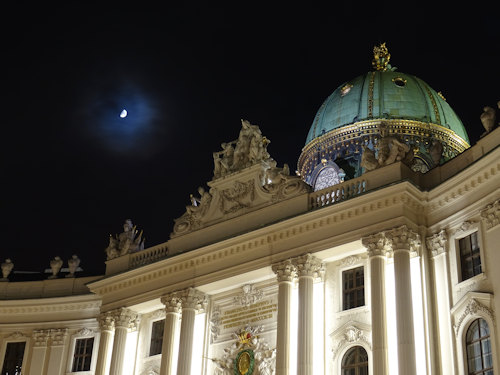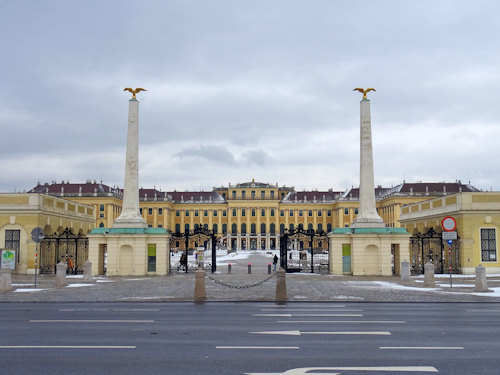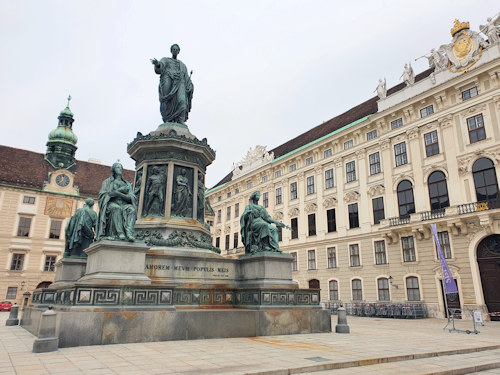
Wander around Vienna and you come across numerous references to Habsburg this and Habsburg that. Monarchs, rulers, Archdukes, and empires. It’s easy to lose track. So here’s a quick and simple guide for visitors.
- See also:
Vienna and the Habsburgs

(The Michaelerplatz end of the Habsburg Hofburg complex in the centre of Vienna)
All those names can get a little confusing.
For example, was there ever such a thing as a Habsburg Empire? What was the Austrian Empire? Is Austria-Hungary the same thing? Who were the Spanish Habsburgs? And who or what is, actually, an Archduke or Archduchess?
Most importantly, did court painters exaggerate the size of Emperor Franz Joseph’s massive moustache?
(No, they didn’t).
So let me offer you some quick explanations to guide you through the complexities of Habsburg history and terminology.

(The Habsburg summer palace at Schönbrunn)
For centuries, Vienna effectively stood at the centre of an ever-changing collection of lands ruled by the Habsburg family dynasty. Emperors and Empresses made their home in the city and constructed many of the historical sights you visit as a tourist.
At times, these Habsburg lands stretched all the way from today’s Italy to Poland and as far east as Romania. (Not to mention periods of Habsburg power and influence in such places as Mexico and the Netherlands.)
Today, of course, Vienna is “only” the capital of Austria: a democratic country that covers an area smaller than most US states. It has no monarchy.
The articles below provide a little background on the rise and fall of the Habsburgs to help you make more of your visit to Vienna.
In particular, the articles explain the confusing Habsburg-related terms bandied around in guidebooks and at tourist sites.

(The monument to Emperor Franz II/I in an inner courtyard of the Hofburg complex)
- The Habsburg Monarchy – where did the Habsburgs rule and why is Vienna so important?
- The Holy Roman Empire – discover why this particular empire is critical for understanding Habsburg history
- The Austrian Empire – how the many Habsburg lands became an empire in their own right in 1804
- Austria-Hungary – how and why the Austrian Empire morphed into Austria-Hungary in 1867
- Austria – it may sound a strange question, but what does the word “Austria” actually refer to? It’s not always as simple as it seems
- Other Habsburg terms – so far so good, but where do the Spanish Habsburgs come into this? What about the Hapsburgs (with a P)? These and other side questions answered
- Empresses and Archdukes – what do these Habsburg titles mean and who got them? (And discover why lucky Emperor Franz II/I had two numerals after his name)
- k. u. k. and k. k. – finally, you see these abbreviations everywhere (even today) in connection with the Habsburg court, but what do they actually stand for?
P.S. If you’re in Vienna, then consider the Schloss Schönbrunn VR experience: a quick 24-minute journey through over two centuries of recent Habsburg history.